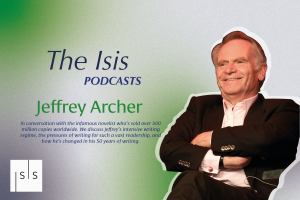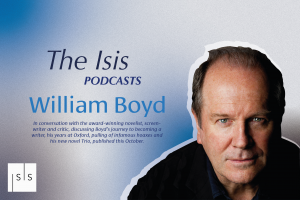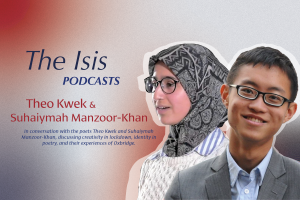
Has Spotify changed the way we listen to music?
by Christian Jones | March 30, 2018
I sit writing this piece to the driving soundscapes of Rival Consoles, a British artist I first came across last year. I’m fairly sure that I discovered him through a Spotify algorithm, most likely a song ‘radio’ manufactured to keep me quietly happy as I focus on something else. All I can really tell you about finding him is that I’ve only been listening to his music for a few months. The data must exist: Spotify could tell me at what second I first listened to one of his songs, how many times I replayed it, what direction I was travelling in, and then provide an intrusive conclusion about my mindset or listening habits as a result of the intersection of such exact information.
Being locked on the wrong side of their closely guarded database, this moment of discovery is for all intents and purposes non-existent. Maybe I’ll pop up as a statistic in next year’s data-laden advertising campaign as a “2019 goal; it’s ok to stand still: 60,988,120 minutes of audio were streamed as listeners morosely stared out of train windows”. Either way, reducing the moment to one of these data points detracts from my discovery quite significantly. It is an inescapable fact that in pushing automated discovery as the default listening state, streaming services rob the act of discovery of its emotional and humanising context. The connection to the music is eroded, and without a concerted effort on the part of the listener it can completely disappear.
Instead of being the result of a passionate recommendation, or the conclusion of a year-long hunt for a tune still resounding through last year’s festival haze, this discovery came from $16 billion of venture capital and some sun-deprived Swedish mathematicians. Music streaming rose by a further 10% in 2017, with each person listening to an average of 1,036 tracks over the year, and Spotify has become the dominant force in a landscape that is re-orientating itself to deal with the universal presence of music. Unparalleled accessibility has led to constant demand for new and different music. People naturally get bored and desire new experiences, cultivating more focused tastes whilst simultaneously developing broader appreciations for just how much music exists.
Extreme accessibility to new music therefore feeds an ever-increasing desire to keep listening, and it is this that makes music discovery so valuable to the technological giants delivering it. It is no surprise that the first page displayed by Spotify is a range of playlists updated with the latest tunes matched to your tastes, designed to get you exploring. During its financial troubles last year, Soundcloud delivered a graphic interface overhaul to its mobile app. A significant but undocumented change was the refocusing of the initial opening page, wherein the user is no longer presented with their personal feed but a discovery tab, featuring a large search bar and suggested playlists and recommendations. Spotify’s assets are not just the 30+ million songs held on its servers, but its playlists. The number of songs provided by a given service is meaningless if we can’t decide what to listen to.
Discovery is everything, but does it matter where we get our music from? Much like a learning algorithm, the development of musical taste requires wide and varied listening, and the fact that it is so easy to skim through tracks with such little effort and pick out what you like is an ability unheard of in the history of listening to music. Yet it is in the exertion of effort that some sort of bond is formed with the music. In actively choosing where to look and what to pick out we slowly build a web of understanding and references that imbues the music with a new dimension of emotional resonance.
The website ‘everynoiseatonce’ presents this web literally, displaying all of Spotify’s self-determined genres and sub-genres as a sort of scatter chart, allowing you to zoom in and out and jump straight from deep minimal techno to psychedelic-blues-rock. It differs from Spotify in that it lets the user arrive at a point as a result of a series of conscious decisions, rather than beginning with a set of playlists designed to give the illusion of choice. Simply by navigating this you are engaging in more active discovery than Spotify itself allows, generating a stronger connection to the music you listen to.
With vinyl sales up 53% from 2015 it is clear that people are keen to regain the emotional context that algorithms scrub away, and in exploring the world of vinyl active discovery takes a physical form. Leafing through bins of records and assessing each one before deciding what to listen to is a process that forces you to engage with the music you are listening to, and by lengthening the journey it sweetens the reward. There’s a unique excitement to spending ten pounds and leaving with six bargain items, a couple of which might be diamonds in the rough. In stark contrast to my conflicted relationship with the music of Rival Consoles, I vividly remember picking out a record simply because it had no labels from Amoeba records. Next thing, I was transported to an early 2000s rave by a mashup of two Prodigy songs, replete with euphoric piano chords and an acidic bassline.
The joy of finding a record you actually enjoy and would never have encountered otherwise, especially with the inability to map the vinyl landscape as cleanly as we can the digital one, injects a strong element of the unknown into every voyage of discovery. Record stores can offer both a space and a subject for meaningful conversation with strangers, adding more unpredictable variables into the mix. If you do discover something you like, the result is a unique manifestation of your own decisions, and not simply an intersection of data sets. Any discovery made in this way reflects a part of the listener and, as the product of decisions ranging from the name of a label or artist to unlikely conversations and heated debates, the music becomes deeply ingrained with emotional and humanising context. Whilst it is easier than ever to come across new music, there is huge pleasure to be gained from taking a more active role.
Artwork by Issy Davis




